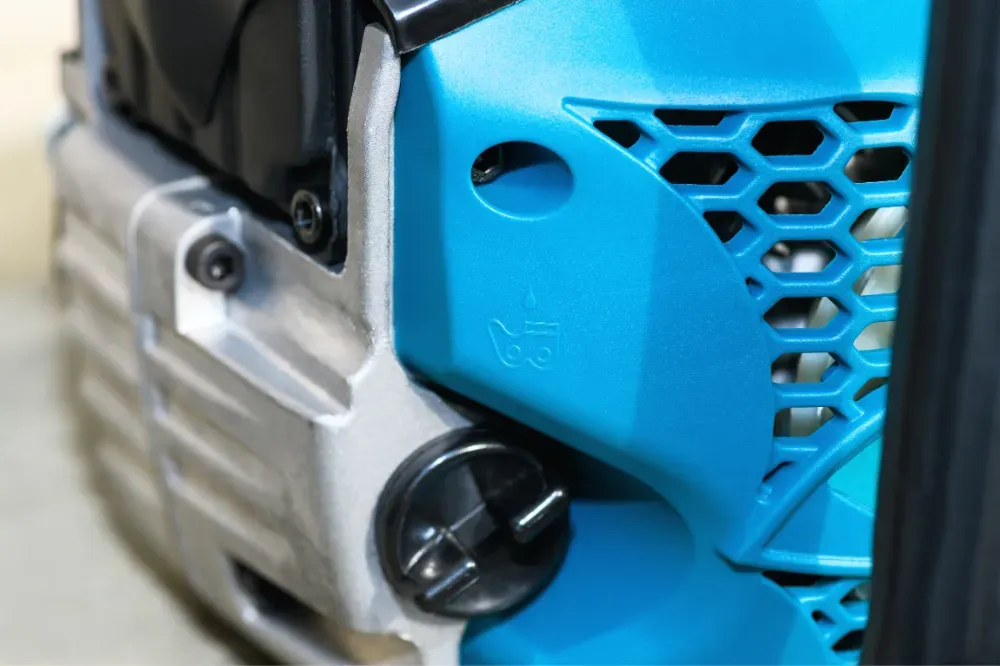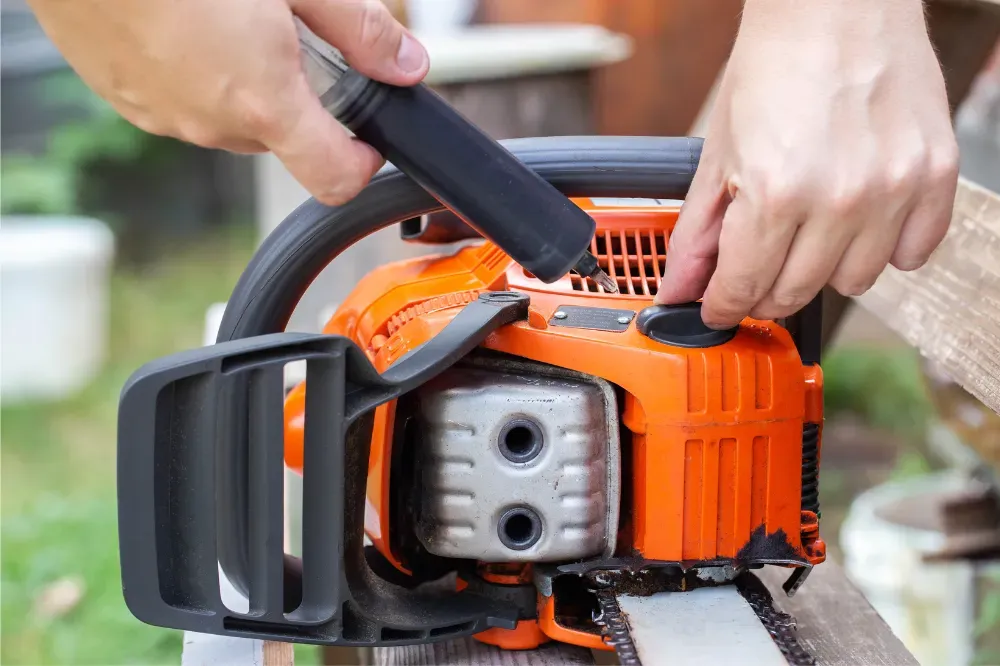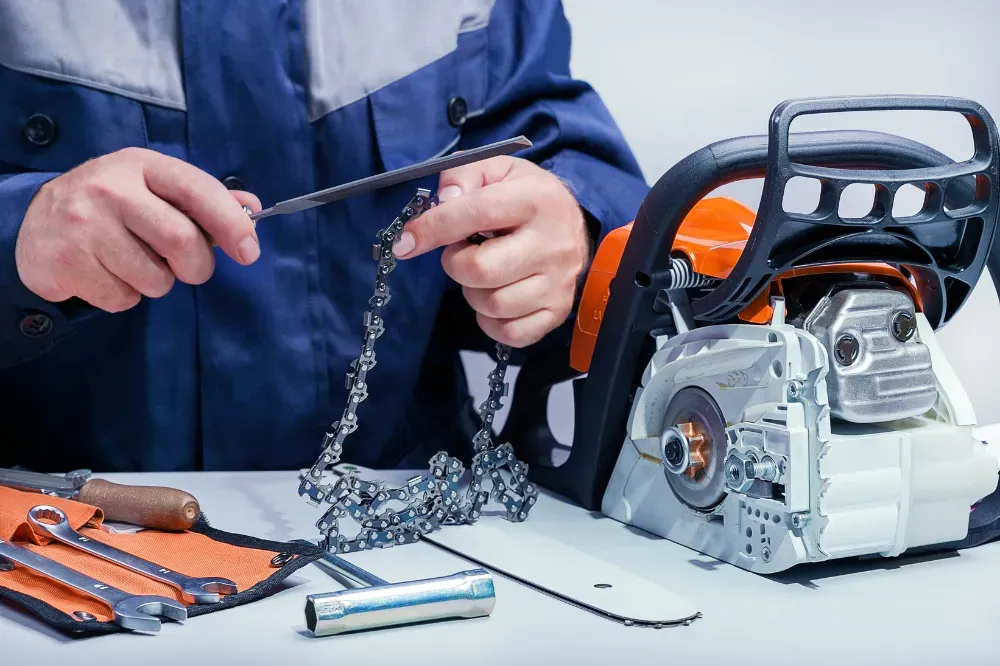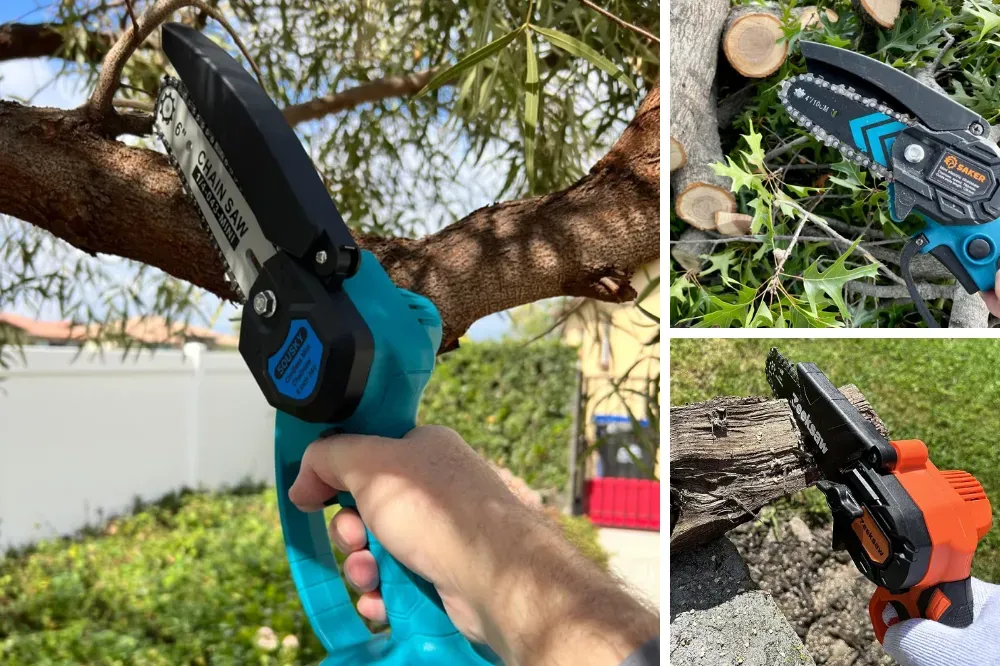Key Takeaways:
- Learn the essential steps for proper lubrication of your mini chainsaw to ensure smooth operation and longevity.
- Discover the types of oil suitable for mini chainsaws and the importance of using the correct oils.
- Understand the frequency and techniques of manual oiling to maintain your chainsaw's efficiency.
Maintaining your mini chainsaw involves several crucial steps, and one of the most important is ensuring it is well lubricated. Proper lubrication is essential for the chainsaw to operate efficiently and to prevent premature wear and tear on its components. In this article, we'll walk you through how to oil a mini chainsaw, the types of oil to use, and the best practices for keeping your chainsaw in top condition.
Understanding the Importance of Proper Lubrication
Proper lubrication is crucial for the smooth operation of mini chainsaws. As the chainsaw bar and chain operate at high speeds, heat is generated, leading to friction and wear. Without proper oiling, this friction can lead to excessive wear and even damage to the chainsaw bars. Chain lubricating oil, often with anti-wear additives, is designed to reduce friction and protect the metal surfaces of the chain and bar.

Selecting the Right Chain Oils
When it comes to choosing chain oils, it's important to use high-quality bar and chain oil containing anti-wear additives and which is specifically designed for chainsaws. These oils have a high viscosity to cling to the chain and not sling off at high speeds. Avoid using motor oil or vegetable oil, as they lack the necessary viscosity and anti-wear properties.
Preparing to Oil Your Mini Chainsaw
Before you start the oiling process, ensure that your mini chainsaw is turned off and has cooled down. Clean any debris from the chain and bar to prevent any blockage in the oiling system. It's also a good idea to wear gloves to protect your hands from the sharp chain.
Checking the Oil Level
First, check the oil level in the chainsaw's oil reservoir. If the level is low, you'll need to fill it with the appropriate chain lubricating oil. Be sure not to overfill, as excess oil can attract debris and create a mess during operation.

Applying Oil to the Chain and Bar
To apply oil to the chain and bar, you can either rely on the chainsaw's built-in oiler system or perform manual oiling. For manual oiling, place a few drops of oil directly onto the chain and guide bar, ensuring an even distribution. This is especially useful for electric chainsaws that may not have an automatic oiler.
Using the Chainsaw's Automatic Oiler
Most mini chainsaws come with an automatic oiler that distributes oil to the chain and bar during use. To properly oil your mini chainsaw, start by filling the oil tank with the recommended chain lubricating oil, following the manufacturer's guidelines. Be cautious not to overfill, as excess oil can sling off during operation, causing a mess and wasting oil. To use the automatic oiler, simply press the oiler button for a few seconds to release oil onto the chain. Allow a few seconds for the oil to distribute along the guide bar before starting the chainsaw to ensure even lubrication. Check the manufacturer's guidelines for the recommended frequency of oiling.

Manual Oiling Techniques
If your mini chainsaw requires manual oiling, you'll need to apply oil to the chain and bar periodically. Pour bar and chain oil into a small container and use a tool or brush to apply the oil along the length of the chain and onto the guide bar. This ensures that every link receives proper lubrication.
After Oiling: Cleaning Excess Oil
After oiling, wipe away any excess oil from the chainsaw to prevent it from attracting dust and debris. A well-lubricated chainsaw should have a thin, even layer of oil on the chain and bar, without any drips or pooling.
Regular Maintenance Checks
In addition to oiling, regular maintenance is vital for mini chainsaws. After each use, inspect the oil level and top up if necessary. Keep the chain tensioned properly, and clean debris from the guide bar and chain regularly. Also, check for any signs of wear and tear on the chain and bar. Inspect the oiler button and oil reservoir for any signs of damage or wear, replacing worn parts as needed.

Environmental Considerations
When using your mini chainsaw in environmentally sensitive areas, consider using environmentally friendly oils. These oils are designed to reduce the impact on the environment while still providing the necessary lubrication for your chainsaw.
Choosing the Right Mini Chainsaw
If you're in the market for a mini chainsaw, consider models with features like a built-in control circuit board, brushless motor technology, and ergonomic grip for ease of use. Chainsaws like the Tietoc Mini Cordless Chainsaw offer innovative design, excellent customer support, and are an excellent choice for both the DIY enthusiast and professional.
Summary
Properly oiling your mini chainsaw is a simple yet essential part of its maintenance. By selecting the right oil, checking the oil level, and applying oil correctly, you can ensure smooth operation and extend the life of your chainsaw. Remember to clean any excess oil and perform regular maintenance checks to keep your chainsaw running efficiently.
FAQ Section
Q: How often should I oil my mini chainsaw? A: Proper maintenance of your electric chainsaw, including oiling, depends on how often you use it. For regular use, check the oil level before each use and top up as needed. If you notice the chain is running dry, apply oil immediately.
Q: Can I use motor oil for my mini chainsaw? A: While motor oil can be used as a temporary solution, it's not recommended for long-term use. Motor oil lacks the high viscosity and anti-wear additives found in high-quality chainsaw bar and chain oils, which are essential for protecting your chainsaw.
Q: Is it possible to over-oil my chainsaw? A: Yes, it is possible to over-oil your electric saw. Adding too much oil can lead to attracting debris and creating a mess. Always follow the manufacturer's guidelines for filling the oil tank and properly oil the chainsaw to maintain proper lubrication without excess.











